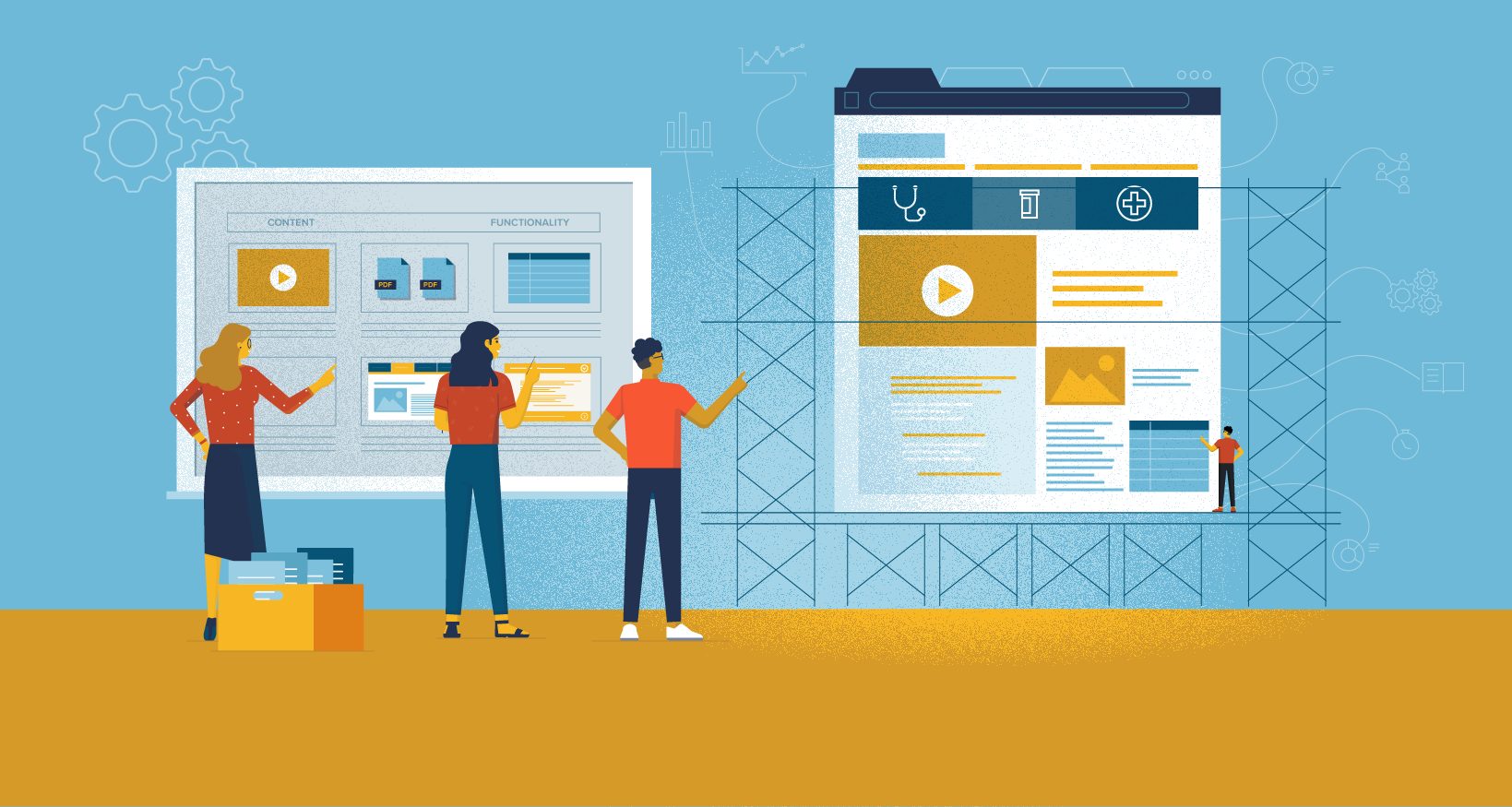
Producing an effective HR benefits microsite that works for all employees starts with a clear plan that considers their state of mind.
As useful as benefits microsites have become to HR teams, it’s tempting to get overwhelmed with all the information that could go into one. But don’t expect to simply copy and paste all the text from the print brochure onto HTML pages and expect that will suffice. Likewise, with all the cool bells and whistles that are possible with modern web pages, it’s tempting to forget that interactivity doesn’t guarantee good usability. So having a plan is crucial if you’d like to avoid doing unnecessary work creating content no one is interested in while ensuring that the microsite covers all the content needs of your client’s employees. The end result of a good HR microsite plan should be a clear idea about what content and functionality the microsite needs.
This involves 4 important tasks:
- Understanding your audience
- Outlining content needs
- Identifying functionality needs
- Creating a working timeline
1. Understand Your Audience
In order to decide on the right content and functionality of the microsite, you need to understand who will be using it, and why they’re there.
So ask yourself,
What devices do they tend to use?
Are most of your workers at their desks throughout the day or are they out in the field using mobile devices? Any microsite you build should be responsive so it can be comfortably viewed on any device, but knowing the most used devices prevents you from wasting your efforts optimizing for a device very few people will use.
Where on the employee lifecycle are they?
As you’ll see in the next task, the answer to this question determines the kinds of content they’re most interested in, and the kinds of features they are more likely to use. It’s good to know what portion of your microsite’s audience will be new to the company, established workers, or just there to enroll during annual enrollment.
If this is your first microsite then you won’t have the benefit of digital analytics to give you data-driven answers to the above questions. But carefully deployed employee surveys can help you make an educated guess for the first microsite. Then, as you monitor your microsite’s analytics, you’ll be able to make more informed decisions in subsequent years.
2. Outline Content Needs
The information in the print benefits brochure is a good start, but consider the state of mind your audience will be in when they access the site. By that I mean, think about what stage of the employee experience they’re in. So new hires would have a different set of priorities than an established worker getting married or having their first child. And of course, there’s always the special circumstance of Open Enrollment where the main priority for all employees is what’s changed since last year.
New Hires
During the onboarding process, new employees aren’t as concerned with deductibles and in-network differences as they are with the range and scope of all the benefits they’ll have access to. So an overview of the options available, along with relevant definitions, is probably more useful to them than detailed descriptions.
There are probably a lot of different systems and processes to learn in addition to enrolling in a variety of plans. So having a checklist they can refer to helps them navigate the various options confidently and feel like they’re not missing out on something important.
Established Employees
When life changes happen, established employees are going to want to know specifics like what to expect as far as coverage limits and costs. Employees are more motivated in this stage so they’re more likely going to use the search bar to get directly to the information they want. Succinct bullet points, graphs, charts, or tables will make this content more skimmable, hence more useful for them in this state of mind.
Annual Enrollment
Every year there are bound to be new plans and new coverage limits. Temporarily carving out a prominent place to highlight these changes on the microsite helps established employees with their decision process and makes the entire open enrollment season go more smoothly. Just like new hires, when it comes time to make those plan changes it’s great to have a central place where employees know they can go to access each provider’s portal.
3. Identify Functionality Needs
Just putting the content on the site in the form of endless paragraphs and pdfs isn’t enough. All that important information is useless if the way it’s presented on the site is hard to access or understand. One of the advantages of housing benefits information online, as well as in a printed piece, is that you have a variety of web-based features to help employees navigate the dense benefits information in a way that suits them.
With all of the possible microsite features these days, it’s hard to know which to use and when. Again, it’s useful to think in terms of employment stages to better understand what functionality employees need for each task
| Employment stage | Important activities | Helpful Tools/features |
|---|---|---|
| New hires |
|
|
| QLE |
|
|
| Annual Enrollment |
|
|
4. Create a Working Timeline
This next step involves the actual building process, but it’s always good to have a rough timeline in place to manage everyone’s expectations. A thorough microsite building process (more details in the next section) usually follows this sequence:
- Sitemap
- Wireframes
- Design
- Development
- Content production
- Beta
- Launch
An experienced development team will be able to give you a good idea of how long each stage of the building process should take. Since you have a sense of the kinds of content and functionality you’re asking them to build, this estimate should be close to accurate, including ample time for revisions. Another sign you’re working with a competent development team is the presence of a project manager who will work with you to keep the process moving and manage any changes to the timeline if anything happens.





